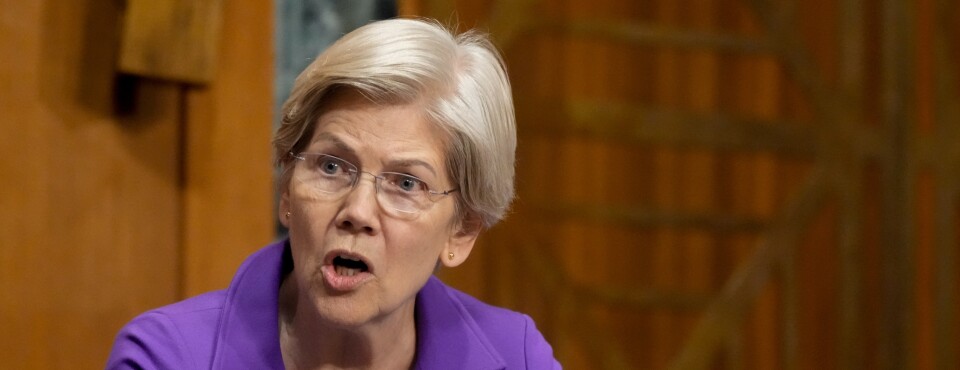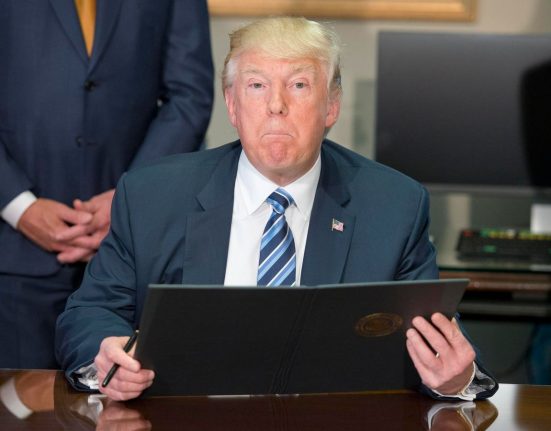A rare bipartisan deal to regulate stablecoins is now on life support, underscoring how a proposal with widespread backing from lawmakers and industry players can get caught up in the political maelstrom over the Trump family’s business conflicts.
A bloc of Democrats and Republicans in the US Senate stood ready to advance the “GENIUS Act” (S. 1582), supported by many digital asset and consumer advocates as way to place federal guardrails on the $205 billion stablecoin market.
But the legislative push collapsed last week after Democrats demanded provisions ensuring that the president and vice president are covered by bill language to prohibit lawmakers and senior executive branch officials from issuing stablecoins while in office.
The impasse leaves the US at risk of lagging Europe and other jurisdictions and relying on an uneven array of state rules to police digital tokens pegged to traditional currencies, frustrating some industry professionals.
Lawmakers on both sides of the aisle have already mounted an effort to revive the stablecoin legislation, with lead bill sponsor Sen. Bill Hagerty (R-Tenn.) urging bill passage before Congress reaches its Memorial Day recess.
“The statement about how this could allow the Trump family to make money with impunity is kind of fearmongering,” said Jonathan Schmalfeld, an associate at Polsinelli PC who focuses on blockchain technology. “It’s hard to see how regulating something that is currently legal by creating a regulatory framework that provides more consumer safeguards and protections could somehow benefit the Trump family directly.”
World Liberty Financial, the Trump family’s decentralized finance project, announced a $2 billion investment using its new stablecoin in early May. The transaction by Abu Dhabi’s MGX uses the USD1 token to invest in Binance Holdings Ltd., the world’s largest crypto exchange, which pleaded guilty several years ago to money laundering and other violations.
The announcement drew a sharp rebuke from Sen. Elizabeth Warren (D-Mass.), who warned the stablecoin legislation would “make it easier for the President and his family to line their own pockets.” In addition to the stablecoin investment, the creators of Trump’s memecoin held a contest offering its top holders the chance to win a private dinner with the president scheduled for May 22.
Regulating stablecoin issuers won’t necessarily curb the Trump family’s digital asset operations, though it may stave off potential fraud by entities purporting to offer dollar-backed tokens and help avoid a repeat of the 2022 collapse of TerraUSD and Luna, according to lawyers specializing in cryptocurrency.
Regulator Roulette
Stablecoin issuers and consumers both seek more predictability and clarity over what regulations apply—or even which regulator oversees the dollar-backed investments.
The Securities and Exchange Commission under Biden-era Chair Gary Gensler approached the tokens and other digital assets as securities, while the agency under Trump-appointed leadership has taken the opposite stance.
“Until there is predictable, equitable legislation in place, the US is going to be a less desirable place to launch some of these products than other places like Europe, which has a full-bore market structure regulation in place with MiCA,” said Meagan Griffin, a partner at Paul Hastings LLP who focuses on digital assets, referring to the EU’s Markets in Crypto Assets policy. “They don’t want the regulation-by-enforcement that was really the hallmark of the prior administration’s agencies.”
Falling behind foreign jurisdictions is just one obstacle posed by the delay in Congress after the Senate measure failed to get the 60 votes needed to advance.
A policy vacuum at the federal level also means stablecoin issuers are at the mercy of varying state policies.
Texas has long treated stablecoins as “money or monetary value” under its existing money transmitter law, California lawmakers passed a measure broadly limiting stablecoins unless the issuer is licensed or otherwise exempt, and Wyoming plans to issue a stablecoin of its own this year.
The current mix of rules could persist without a unifying definition of how stablecoins function, what assets they are pegged to, and who can issue them, according to Braeden Anderson, a managing partner at Anderson PC who has advised clients on crypto regulation.
“It really should be a bipartisan bill that regulates fiat-backed digital dollars, not necessarily related to speculative crypto or memecoins,” he said. “This isn’t casino chips; it’s banking infrastructure for the blockchain age.”
As a banking tool, stablecoins should be regulated by the Office of the Comptroller of the Currency instead of the SEC, which may prompt broader adoption and invite more large financial institutions to act as issuers in an update to their current procedures and systems, Anderson said.
‘From 2D to 3D’
Time is of the essence. Stablecoin issuers are expected to outpace foreign investors as the primary buyers of US Treasuries by 2030, according to an April study by the Citi Institute.
“If those purchases go to foreign currency bonds, that has a huge impact on the US dollar and the US economy,” Schmalfeld said. “It isn’t so much that there’s harm to crypto generally, but that the US dollar might not be the thing that people are pegging their digital asset transactions to, which is a huge danger for the US.”
Opponents of the bill, including small banking institutions and some consumer groups with influence in Washington, see the potential for stablecoins to disrupt a time-tested business model.
Those who embrace the technological shift in dollar-backed transactions see the passage of a unified law governing stablecoin issuers as inevitable, likening it to an evolutionary step as part of broader market structure changes.
“This is like going from 2D to 3D,” Anderson said. “This is better technology, it’s certainly the future, and hopefully Washington can get it together quickly so our digital economy can flourish.”







